Early last month, I had an art opening at Kimball Jenkins School of Art. It was “lightly attended,” so I spent a lot of the time eating cookies and talking with executive director Julianne Gadoury. I told her that I had been wanting to learn a particular historic photographic technique called wet plate collodion. This is a very early tintype photographic process invented in the mid 1800s. It involves creating metal (or glass) photographic plates with some of the oldest darkroom procedures and equipment. I told her that I had enrolled in a wet-plate collodion workshop in London last year, but it was cancelled because of the pandemic.
A few days later, I received a message from esteemed photographer Gary Samson, who is a former Artist Laureate of New Hampshire. Gary said that he been to Kimball Jenkins to see my exhibit and had been told by Julianne that I was interested in learning about the wet plate collodion process. He told me about his wet plate collodion studio in Manchester, NH, and invited me to come learn about the process.
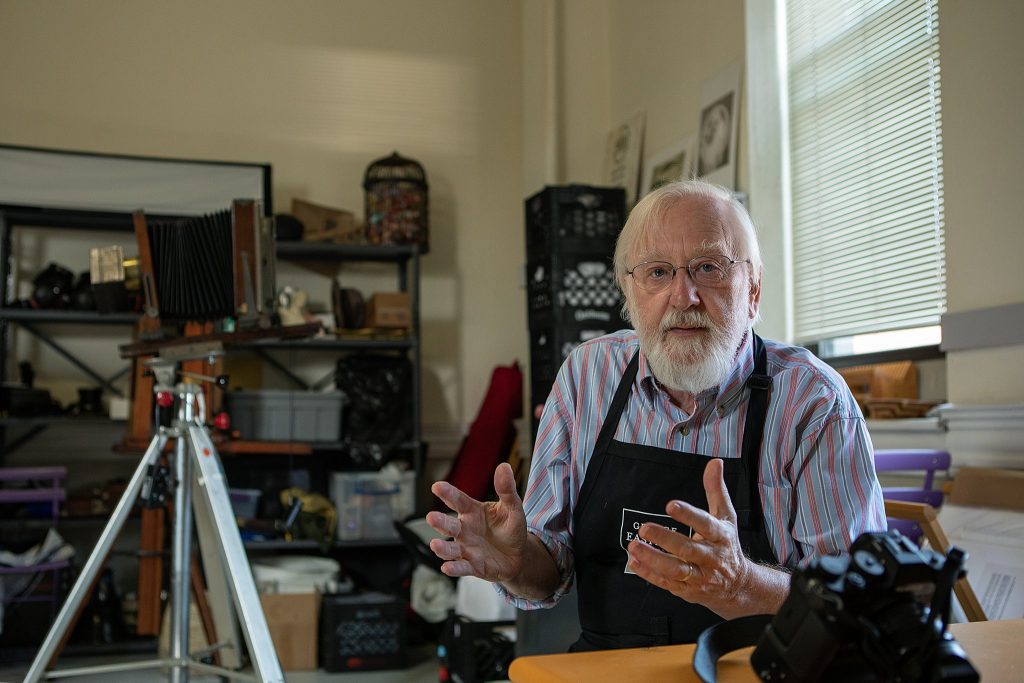
I was thrilled to spend an entire day learning this process. I was grateful and a little unbelieving. Gary said that many people have reached out to him over the years to help him in extraordinary and unexpected ways. He believes in “paying it forward with random acts of kindness.”
Gary is a great teacher, having taught since nationally and internationally since 1981. In 2001, he became Chair of the Photography Department at the New Hampshire Institute of Art in Manchester, NH. He has won many awards for his portrait, cultural, and documentary work, and he served as the New Hampshire Artist Laureate from 2017 – 2019. Currently, Gary is working on a project called “New Hampshire 2020,” involving more than 40 photographers. The project will culminate with seven exhibits around the state, as well as a book.
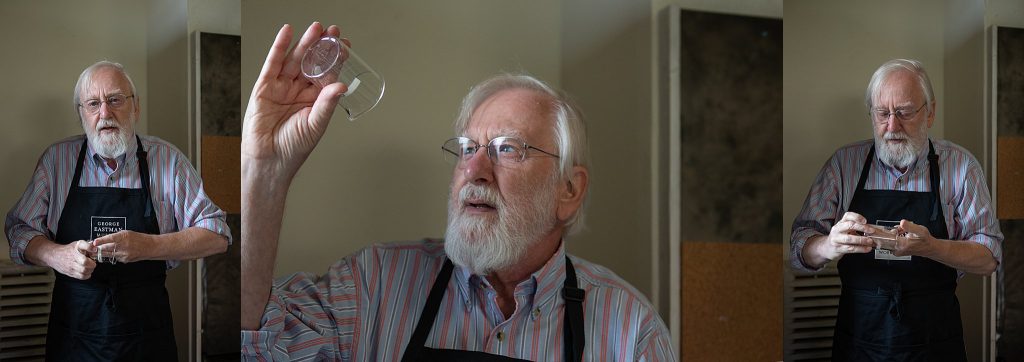
These are cell phone photos of the process. The first day, Gary showed me the entire wet plate collodion process and I even prepared one of the plates. There are many, careful steps to prepare.
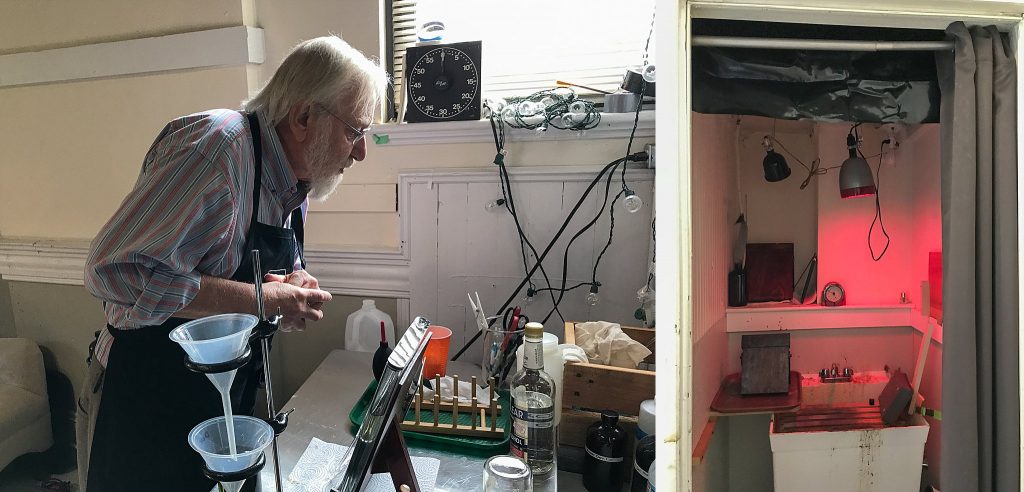
One of the cameras Gary uses for this process is an 8×10, Agfa Ansco field camera, made in the 1930s.

The first subject was me. Gary made two plates and I got to see how the portraits were created, start to finish.
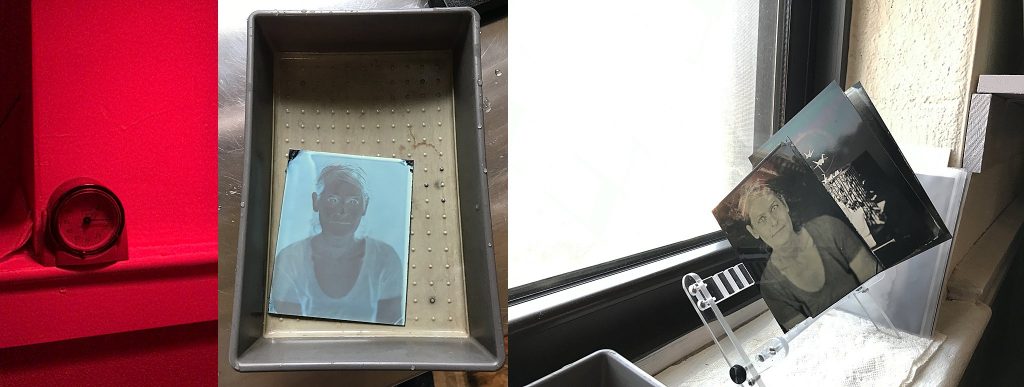

At the end of the first day, Gary offered to take me on as a mentor so I can perfect the wet plate collodion techniques. The second day in his studio, I created a still life, and poured and processed four plates of it. Gary stood nearby to guide me the entire time. I worked in the darkroom by myself (with an occasional grumble when I made a mistake).
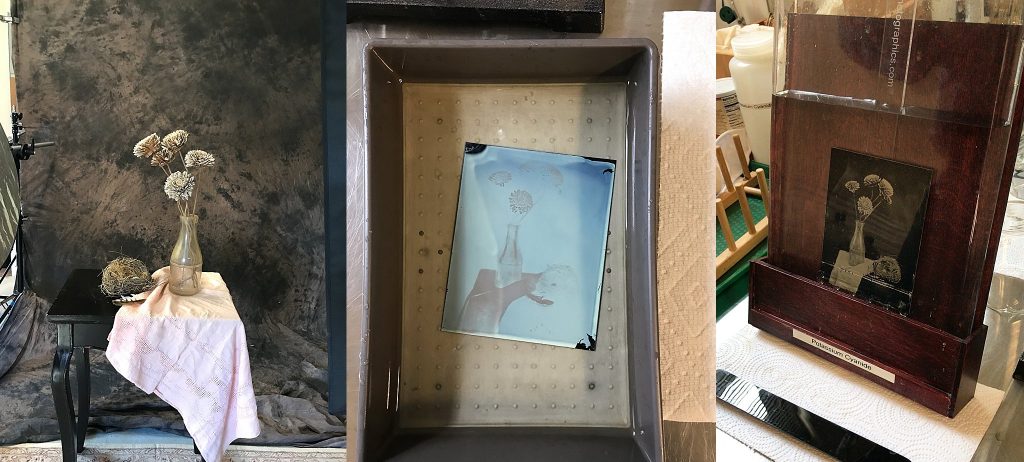
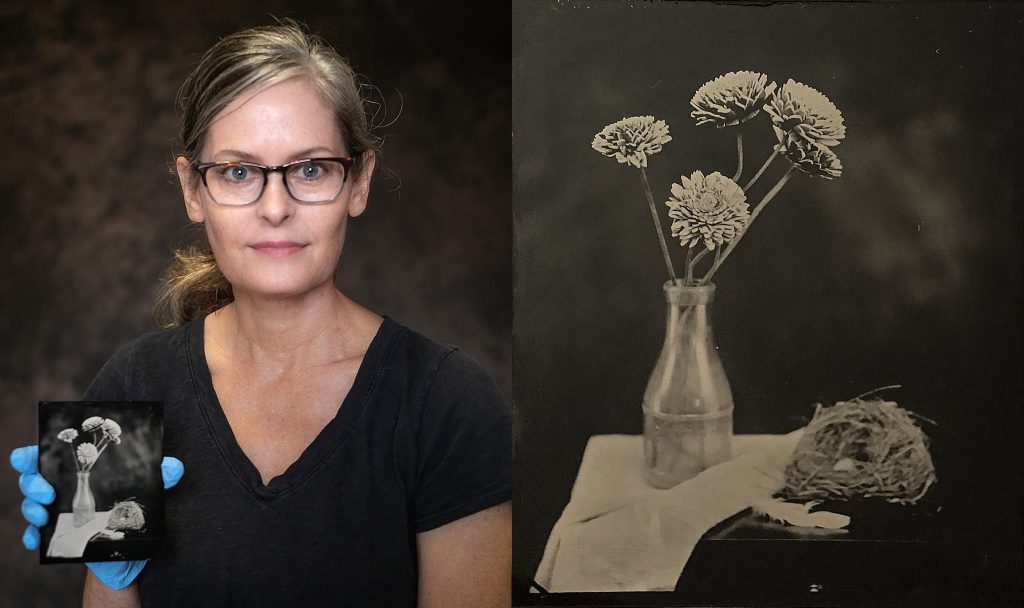
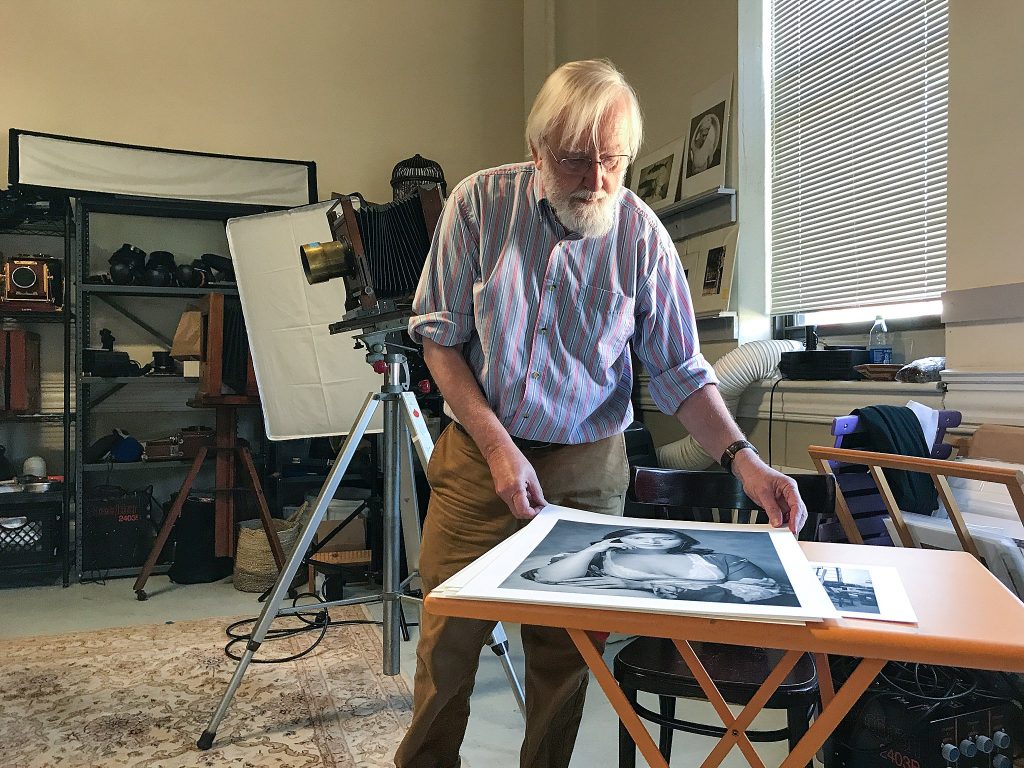
I’m grateful for this opportunity to learn the wet plate collodion process from Gary Samson. I’m looking into creating a darkroom in my own studio to be able to practice more and eventually to incorporate it into my portrait work.
